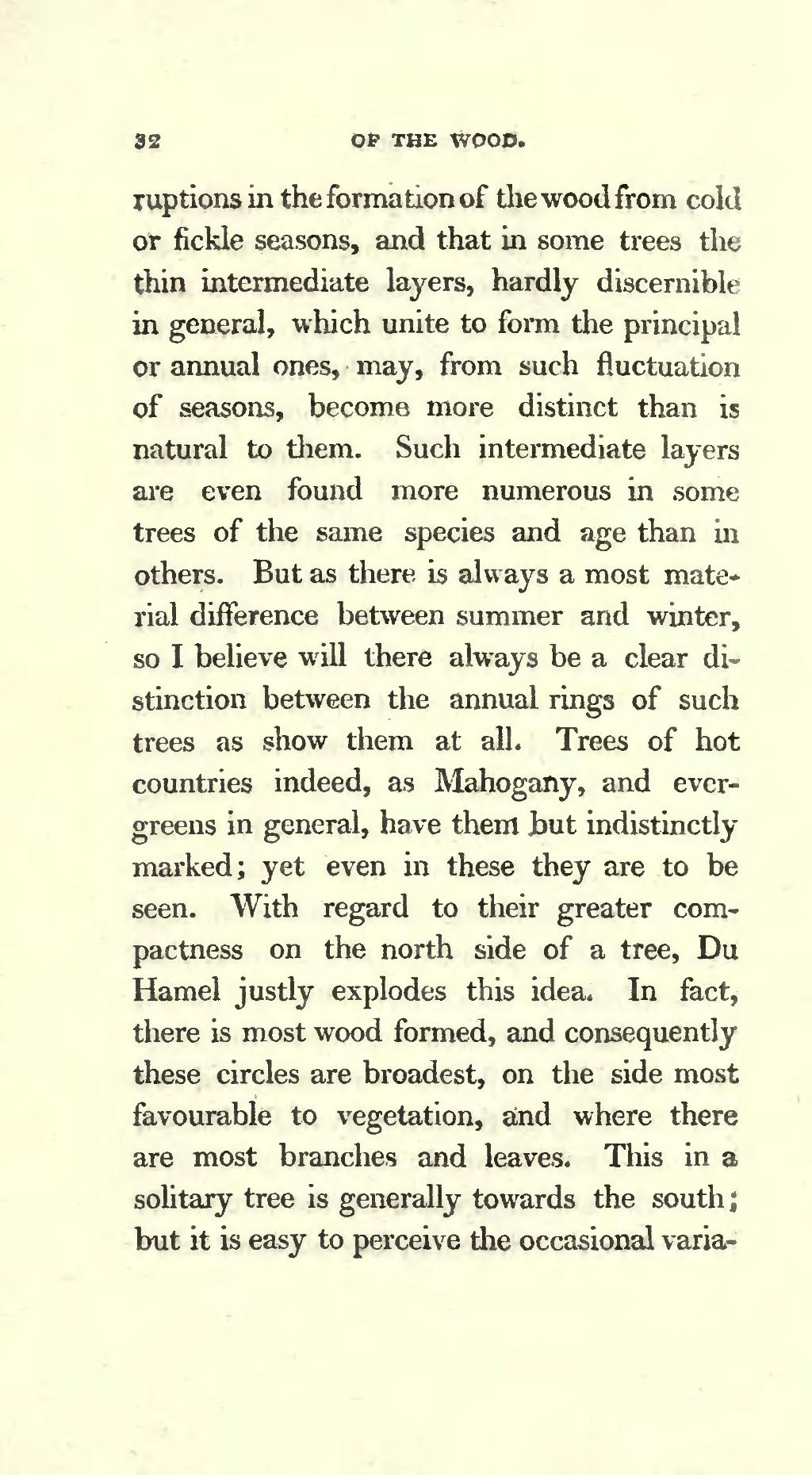ruptions in the formation of the wood from cold or fickle seasons, and that in some trees the thin intermediate layers, hardly discernible in general, which unite to form the principal or annual ones, may, from such fluctuation of seasons, become more distinct than is natural to them. Such intermediate layers are even found more numerous in some trees of the same species and age than in others. But as there is always a most material difference between summer and winter, so I believe will there always be a clear distinction between the annual rings of such trees as show them at all. Trees of hot countries indeed, as Mahogany, and evergreens in general, have them but indistinctly marked; yet even in these they are to be seen. With regard to their greater compactness on the north side of a tree, Du Hamel justly explodes this idea. In fact, there is most wood formed, and consequently these circles are broadest, on the side most favourable to vegetation, and where there are most branches and leaves. This in a solitary tree is generally towards the south; but it is easy to perceive the occasional varia-
